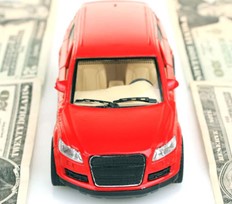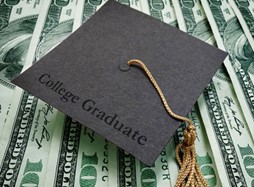
July 10, 2015 – By Michelle Smith

According to annual surveys from the American Psychological Association, money has been America’s leading cause of stress every year since 2007. However, people earning less than $50,000 per year are experiencing more stress than those earning more than $50,000, which wasn’t always the case. It’s a gap that has emerged since 2007, the APA says.
Things That Are Becoming Harder to Afford
It wasn’t so long ago that a single income could support an average household. Now, a lot of two-income households are struggling to maintain the status quo, and many have fallen behind. Changing values can partly explain the differences between lifestyles of yesteryear and of today, but not fully. The truth is, many things our elders took for granted are becoming harder for the middle class to comfortably afford, and are gradually seen more as luxuries than staples.
1. New Cars

But that doesn’t stop dealers and finance companies from helping people get behind the wheel of new automobiles – and the financial strain isn’t stopping consumers from signing horrid contracts that include expensive add-on products, high interest rates, astronomical payments, and lengthy loan periods. It’s little wonder that a rise in vehicle prices and subprime lending are complemented by increasing repossession rates.
According to NBC News, Standard & Poor’s has warned that the nation may be on the verge of an auto market bubble. An increasing number of overdue loans and subprime loans are being packaged into investment products and sold, which is how risky mortgages were treated before the housing crisis.
Being able to scrape up the monthly payment doesn’t mean a car is affordable. NBC News says experts advise using the “20/4/10 rule” to test affordability. If you can’t put down 20%, pay off the loan within four years, and get monthly payments and insurance for less than 10% of your gross income, you can’t afford the vehicle. Many people don’t come anywhere near meeting those criteria, and they should be buying used vehicles – if they buy at all.
2. Dentist Visits

Dental care is expensive, and teeth generally aren’t covered by regular insurance – they require separate policies, which millions of people lack. Individuals with dental insurance may be better off than those without it, but most still have to pay steep costs for dental care. In addition to the insurance premiums, they face hefty co-payments, which can range up to 50%.
According to the American Dental Association, adult dentist visits declined in the decade between 2000 and 2010, making it unsurprising that about 25% of adults suffer from untreated tooth decay. Children’s visits to dentists improved during that same period, but they still aren’t getting all the care they need: According to the Kaiser Family Foundation, tooth decay is the most common chronic illness among school-age children.
According to Healthline, nearly 8,000 people per year die from oral and pharyngeal cancers. Dental care isn’t just an issue of looks and fresh breath. Untreated dental problems can lead to serious health challenges, including heart issues and diabetes.
3. Sick Days

Having millions of workers without paid sick leave has numerous ramifications. For example, people tend to make unwise financial decisions, such as taking themselves or family members to the emergency room to avoid missing work, which unnecessarily drives up healthcare costs. Over one million emergency visits would be avoided, and Americans would save $1.1 billion in medical costs if people without paid sick leave received it, according to The Institute For Women’s Policy Research.
People without paid sick leave also commonly pose a health threat to others. For example, the flu would be less prevalent if sick employees were paid to stay home and recover. Giving workers one day to recover would reduce flu transmission in the workplace by 25%, and allowing workers two days would reduce the number of cases by almost 40%, according to research from the University of Pittsburgh Graduate School of Public Health. Similarly, many workers who don’t have paid time off to care for family send their sick children to daycare and school where they get other children sick.
4. Vacations

Paid vacation leave is another benefit U.S. employers aren’t required to provide, and the Bureau of Labor Statistics found the number of companies that willingly do so declined over a 20-year period. In 1992, 82% of workers received paid vacation days, but only 77% received the benefits in 2012. That means for a growing number of people, going on vacation is only possible if they can afford to forgo income and pay for a trip – something a lot of people can’t do.
Affording a trip is a problem even for many people who do have paid vacation days, which helps explain why American workers only use about half their leave. And when they take off, the days are often used for staycations, when people take leave but don’t travel. A 2014 survey publicized by Skift found more than 60% of adults hadn’t traveled within the past year – and many who do travel are sacrificing things like outings, big-ticket electronics, and new clothes to make it happen.
5. College

That same Federal Reserve data shows delinquencies and defaults have occurred at a far higher rate with student loans than other types of debt. Student loan debt has become so burdensome that many 20- and 30-somethings are having trouble establishing themselves as independent adults. The Federal Reserve also found “persistent upward trends” of 25- and 30-year-olds living with parents or older family members instead of starting their own households, and the bank cites rising student debt as a significant factor.
The costs of higher education is also weighing on the home-buying habits of young Americans. Though higher education is supposed to pave the way to a better life, homeownership is 36% lower for people paying student loans than for their peers without student debt, according to research from the One Wisconsin Institute that was published in The Washington Post.
However, students loans aren’t only hobbling young people. Americans age 60 and over owe billions in student debt for their own degrees and loans they’ve cosigned for children.
A growing number are now dealing with the repercussions, which include having their Social Security benefits snatched to pay the bills. According to a Treasury analysis for CNN Money, three times more Social Security checks were garnished for student loans in 2013 than in 2006. What Americans are learning the hard way is that just because lenders are issuing student loans doesn’t mean people can afford to pay them back.
6. Weddings

By the time people buy rings and host their wedding events, it’s not uncommon for them to have spent between $10,000 and $30,000. That’s more than many of those couples have in the bank when they begin their marriage, which is a clear sign they’re dangerously overspending.
To cover those costs, people take on second jobs, work overtime, run up credit card bills, and tap family members for funds – and many still end up carrying wedding-related debt after marriage. USA Today says wedding debt is commonly piled on top of existing debts, such as student loans and car loans, meaning couples are starting their lives together with serious financial baggage.
But it’s not just newlyweds who are breaking the bank. Attending weddings is a growing strain on guests’ budgets as they face a list of expenses including formal attire, travel, and gifts.
According to American Express data, the average wedding guest is estimated to spend about $673. That sheds light on the reason 43% of Americans claimed they turned down a wedding invitation for financial reasons in an American Consumer Credit Counseling poll. More than one-third said attending a wedding would cause them to go into debt.
7. Live Entertainment

Of course, fans could go to these events and declare all food, beverages, and souvenirs off-limits to save some money – but the only reason they’d try to enjoy an event under those circumstances is that it’s unaffordable in the first place.
Since 2008, ticket sales to concerts and sporting events have been up and down, with some particularly dismal years. You can’t overlook factors such as better TV quality, which make it more enjoyable to watch events from home, but high ticket prices play a major role in weak event attendance. For some people the cost is discouraging, but for many it’s outright prohibitive. At one point, the cheapest tickets to view the May 2015 boxing battle between Floyd Mayweather and Manny Pacquiao were reportedly just shy of $3,000 – calculate that for a family of four.
8. Retirement

Many young people start planning later than they should and don’t stash away enough after they begin saving. A lot of people who are at or nearing retirement age have large amounts of debt and inadequate assets to cover their monthly bills, plus the expected costs associated with aging. As a result, many people leave the workforce only to find it necessary to return. Among other seniors, there’s a rising trend of semi-retirement, where people work less but continue working.
A growing number of people of all ages are recognizing that full retirement is a lifestyle that’s likely beyond their reach, and they’re prepared to continue working. In a Wells Fargo survey, 34% of the middle class said they didn’t expect to be able to retire until age 80, while 37% said they plan to work until they are too sick or die.
Final Word
When people discuss the plight of the middle class they often paint a picture of a sinking ship. They emphasize that employers are less generous with benefits, that incomes aren’t rising as fast as the cost of living, and high-paying jobs are harder to come by. Granted, that is the case for a lot of Americans, but that doesn’t mean its all gloom and doom in the forecast.
What we can afford is affected, in large part, by our decision-making. Many of the things that seem to be slipping beyond reach are becoming unaffordable because people put themselves in precarious financial situations. What the middle class really can’t afford anymore is being nonchalant about decisions that affect their finances and consuming resources based on whims and desires. To thrive in the current economic environment, people have to be strategic – which means planning, setting priorities, and allocating resources wisely.
Do you believe redefining your priorities could change your standard of living for the better?
